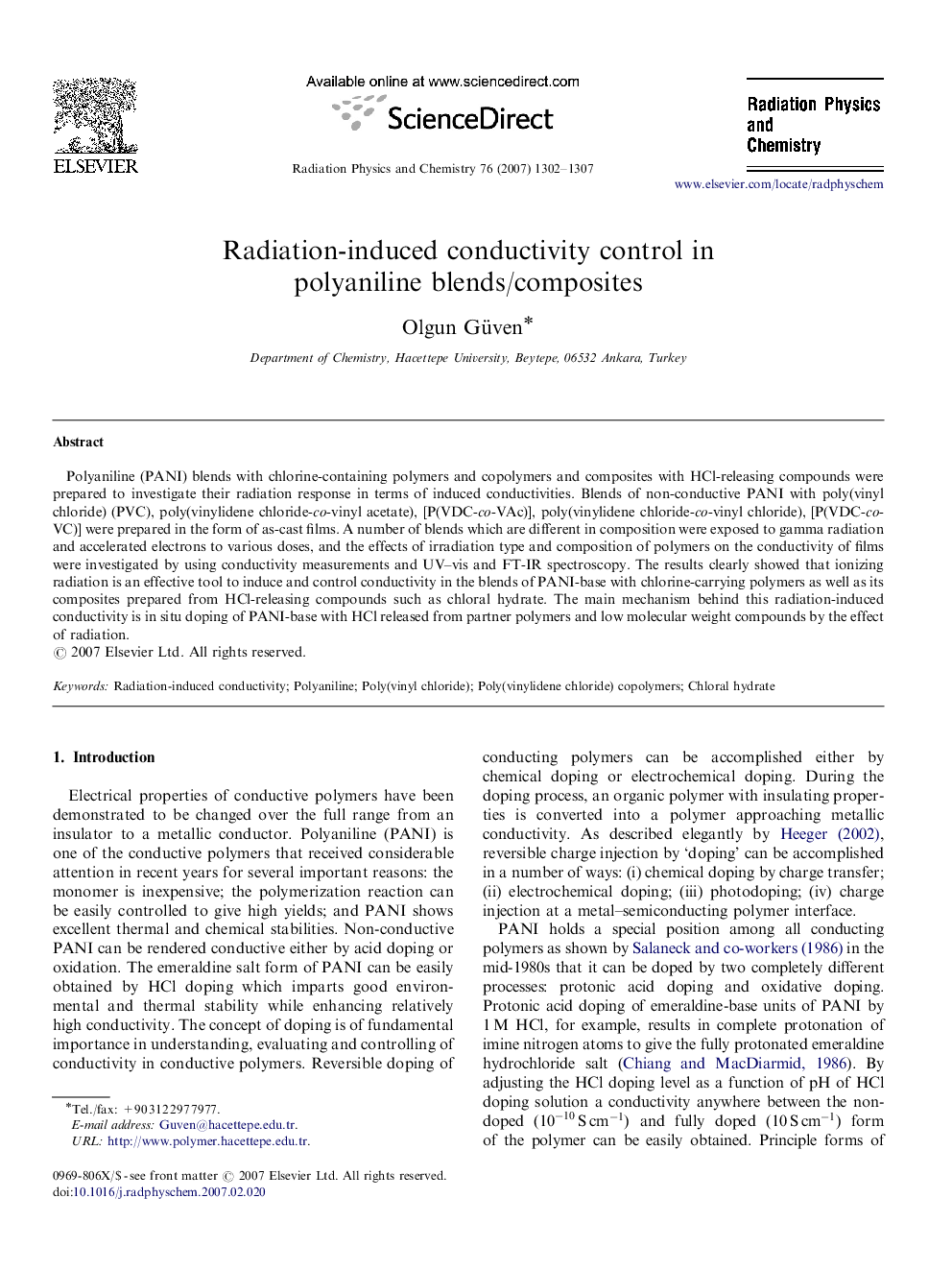| Article ID | Journal | Published Year | Pages | File Type |
|---|---|---|---|---|
| 1887402 | Radiation Physics and Chemistry | 2007 | 6 Pages |
Polyaniline (PANI) blends with chlorine-containing polymers and copolymers and composites with HCl-releasing compounds were prepared to investigate their radiation response in terms of induced conductivities. Blends of non-conductive PANI with poly(vinyl chloride) (PVC), poly(vinylidene chloride-co-vinyl acetate), [P(VDC-co-VAc)], poly(vinylidene chloride-co-vinyl chloride), [P(VDC-co-VC)] were prepared in the form of as-cast films. A number of blends which are different in composition were exposed to gamma radiation and accelerated electrons to various doses, and the effects of irradiation type and composition of polymers on the conductivity of films were investigated by using conductivity measurements and UV–vis and FT-IR spectroscopy. The results clearly showed that ionizing radiation is an effective tool to induce and control conductivity in the blends of PANI-base with chlorine-carrying polymers as well as its composites prepared from HCl-releasing compounds such as chloral hydrate. The main mechanism behind this radiation-induced conductivity is in situ doping of PANI-base with HCl released from partner polymers and low molecular weight compounds by the effect of radiation.
